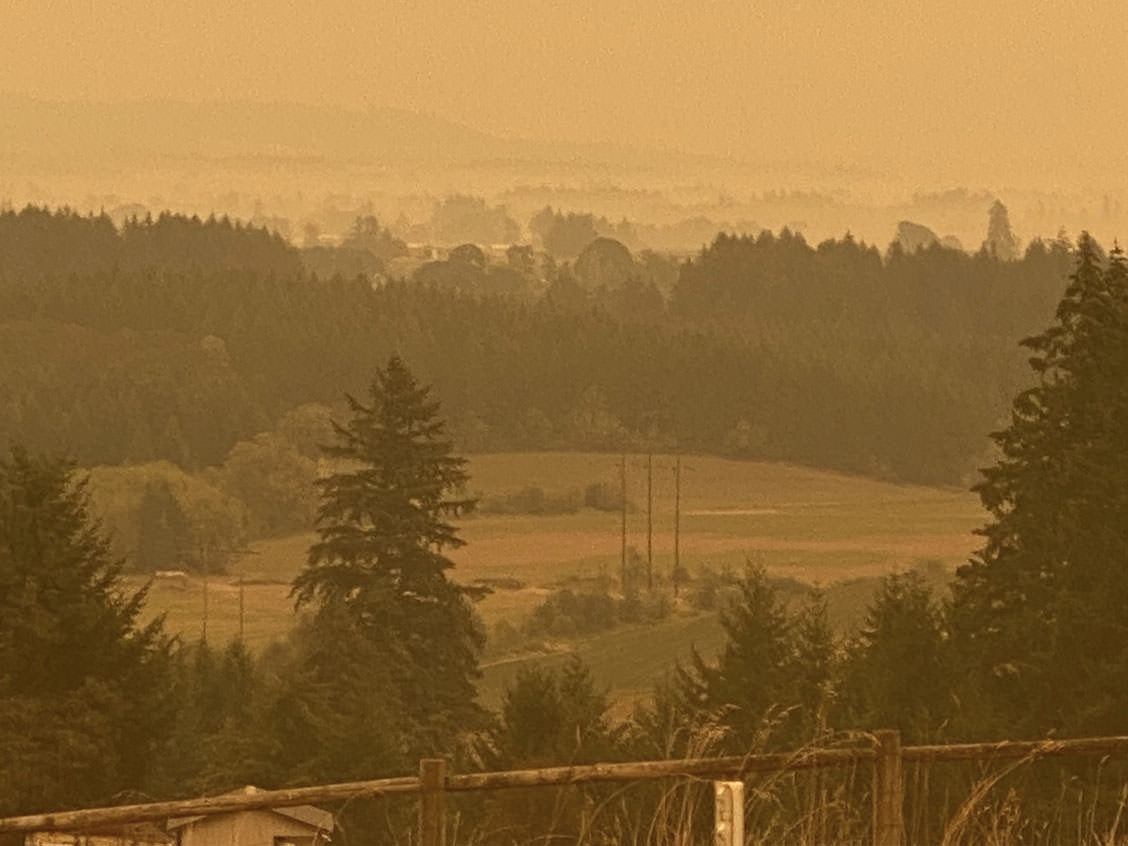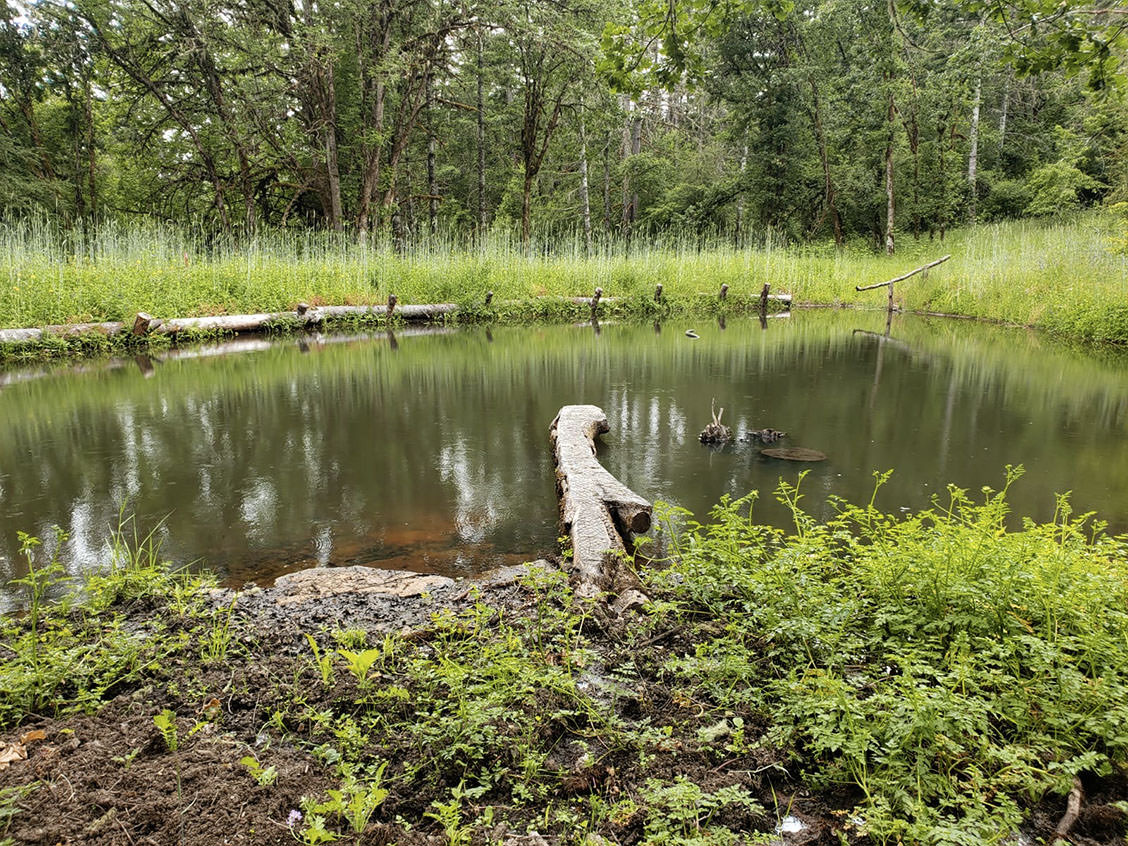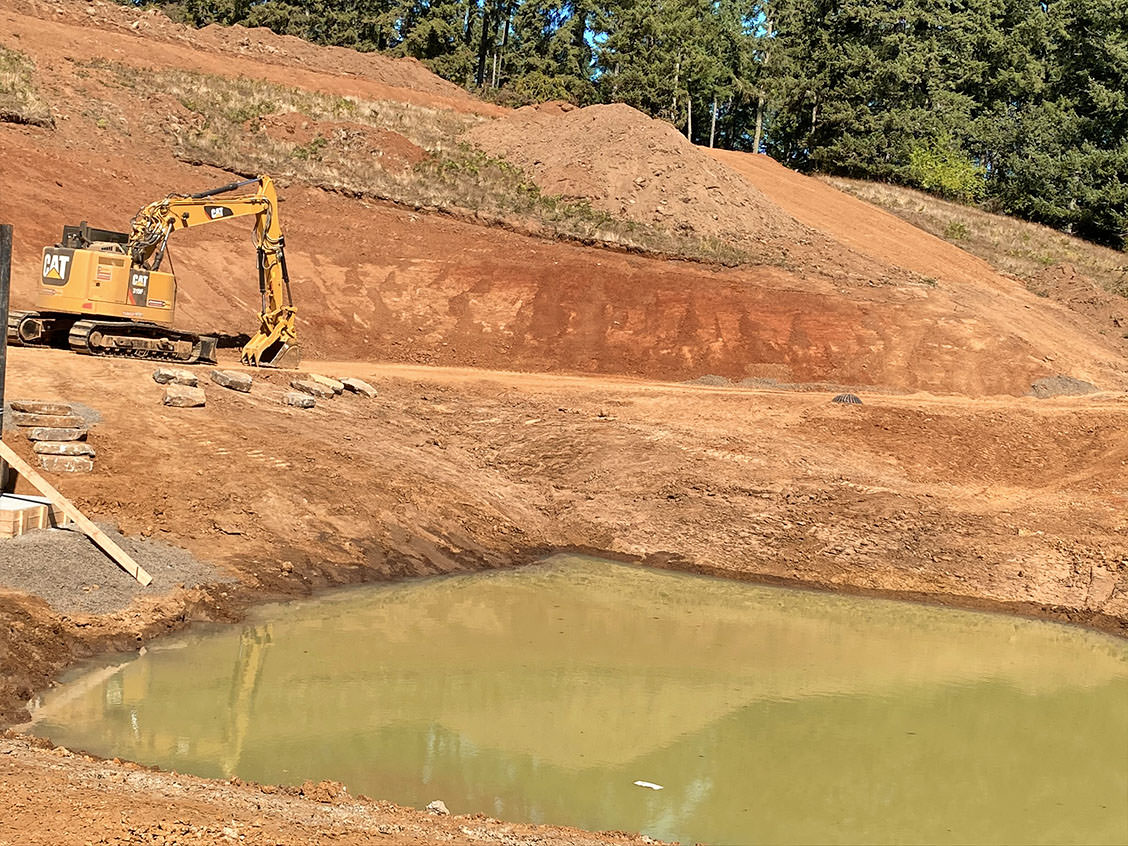
THE PATH TO HOPE
Mid September 2020
This is certainly a dark and scary time.
There is so much pain and suffering caused by the unprecedented fires and choking smoke we are experiencing throughout the West. You can feel it all around you. Through it all, neighbors are helping neighbors and you can feel a growing resolve to heal.

To my fellow farmers who have lost their farms, you are in our hearts. We are praying you will find a way to build again. To our friends, neighbors and fellow Oregonians, we are praying that this will soon be over and together we will find the strength to move forward with hope and the resolve to change our trajectory.
It is undeniable that we are living through the consequences of climate change, irresponsible land management and a badly disrupted water cycle. It is also undeniable that it doesn’t have to be this way. It’s not too late. We are not helpless. We have the power to make a difference. That belief is at the core of the regenerative agriculture movement and why I farm the way I do, in harmony with nature.
In the press, the emphasis is always on reducing carbon. Important for sure but not the whole story. Let’s change the conversation to be about water, the single most important element for all life on earth.
For centuries earth’s natural water cycle has kept the earth cool and moist, our plants, grasslands and trees hydrated and fed our rivers and streams. In a natural water cycle, the sun’s heat turns water from the world’s oceans into vapor that wind carries onto the land. Wind, animals and insects bring microscopic organisms growing on the underside of tree leaves into the air. The water vapor surrounds them and condenses into clouds, forming rain that is responsible, on average, for about half of all rain on the planet.

As the vapor converts to rain, the change in pressure draws even more moisture from the coast inland. As the trees transpire water, they cool the earth creating a vacuum that pulls in more moisture. In a healthy ecosystem, where moisture is plentiful, the falling rain easily sinks into the ground feeding rivers and streams that eventually make their way back to the ocean and the cycle repeats.
The water transpiring from trees is constantly cooling the earth. Amazingly, one tree is the equivalent of ten air conditioning units.
On the humid forest floor, the fungi work in symbiosis with bacteria to break down fallen leaves and biomass further enriching the soil that keeps the forest healthy.
This natural water cycle is broken. Clear cut forest, drained wetlands, cities, roads and plowed landscapes have left us with dry land and hard surfaces that absorb more heat and prevent water absorption. As vapor from the ocean tries to move inland the hot air pushes it back causing storm pressure to build until it finally breaks through with increasingly extreme storms. Water struggles to penetrate the dry land, floods abound. We have more erosion and less vegetation. Drought follows. Trees go dormant and cease to transpire moisture. The fungi that break down the biomass can’t thrive in a dry environment and the desiccated debris that results provides fuel for forest fires.
If you’ve followed Tabula Rasa Farms, you know we believe permaculture water retention landscaping is central to healing our land. Through a series interconnected ponds and a variety of water retention systems, we’ve been able to build up our water table, capture surface water from rain and stop erosion. Our pastures are lush and stay green longer into the dry season.

We are taking proactive steps to guard against fires. We’re planting willow trees, a species so full of moisture they actually retard fire spread. We’re limbing up trees to prevent fire from laddering up the branches and making sure all the biomass is decomposing versus desiccating. Our animals help with that. After three years of our cows and hogs living in our forest land, it’s never looked better.

We’re utilizing wood chip roads which help create a fungal reservoir that begins to creep out into the surrounding land. This feeds the ground and boosts fungal activity that breaks down biomass enriching the soil.
The most important lesson in all this for me has been the path to hope for a more stable planet begins with each of us doing whatever we can to restore balance. Each of us has the power to make a difference and all of us together starts a movement. What we are living through now is a call to action for everyone who cares about this planet.

Create a swale or rain garden in your yard to hold water long enough for it to penetrate the soil. Plant a tree. Revegetate your landscape. Create a wood chip pathway. Most importantly become an advocate for the stewardship of water. Talk about it. Hold the people responsible for the management of our forests and parks accountable for their water cycle management strategies.
For now, above all stay safe. When this over and it is safe to do so, we will be offering permaculture tours and events on the farm for those interested in learning more. Email us at [email protected] if you would like to be notified when these begin.

THE PATH TO HOPE
Mid September 2020
This is certainly a dark and scary time.
There is so much pain and suffering caused by the unprecedented fires and choking smoke we are experiencing throughout the West. You can feel it all around you. Through it all, neighbors are helping neighbors and you can feel a growing resolve to heal.

To my fellow farmers who have lost their farms, you are in our hearts. We are praying you will find a way to build again. To our friends, neighbors and fellow Oregonians, we are praying that this will soon be over and together we will find the strength to move forward with hope and the resolve to change our trajectory.
It is undeniable that we are living through the consequences of climate change, irresponsible land management and a badly disrupted water cycle. It is also undeniable that it doesn’t have to be this way. It’s not too late. We are not helpless. We have the power to make a difference. That belief is at the core of the regenerative agriculture movement and why I farm the way I do, in harmony with nature.
In the press, the emphasis is always on reducing carbon. Important for sure but not the whole story. Let’s change the conversation to be about water, the single most important element for all life on earth.
For centuries earth’s natural water cycle has kept the earth cool and moist, our plants, grasslands and trees hydrated and fed our rivers and streams. In a natural water cycle, the sun’s heat turns water from the world’s oceans into vapor that wind carries onto the land. Wind, animals and insects bring microscopic organisms growing on the underside of tree leaves into the air. The water vapor surrounds them and condenses into clouds, forming rain that is responsible, on average, for about half of all rain on the planet.

As the vapor converts to rain, the change in pressure draws even more moisture from the coast inland. As the trees transpire water, they cool the earth creating a vacuum that pulls in more moisture. In a healthy ecosystem, where moisture is plentiful, the falling rain easily sinks into the ground feeding rivers and streams that eventually make their way back to the ocean and the cycle repeats.
The water transpiring from trees is constantly cooling the earth. Amazingly, one tree is the equivalent of ten air conditioning units.
On the humid forest floor, the fungi works in symbiosis with bacteria to break down fallen leaves and biomass further enriching the soil that keeps the forest healthy.
This natural water cycle is broken. Clear cut forest, drained wetlands, cities, roads and plowed landscapes have left us with dry land and hard surfaces that absorb more heat and prevent water absorption. As vapor from the ocean tries to move inland the hot air pushes it back causing storm pressure to build until it finally breaks through with increasingly extreme storms. Water struggles to penetrate the dry land, floods abound. We have more erosion and less vegetation. Drought follows. Trees go dormant and cease to transpire moisture. The fungi that breaks down the biomass can’t thrive in a dry environment and the desiccated debris that results provides fuel for forest fires.
If you’ve followed Tabula Rasa Farms, you know we believe permaculture water retention landscaping is central to healing our land. Through a series interconnected ponds and a variety of water retention systems, we’ve been able to build up our water table, capture surface water from rain and stop erosion. Our pastures are lush and stay green longer into the dry season.

We are taking proactive steps to guard against fires. We’re planting willow trees, a species so full of moisture they actually retard fire spread. We’re limbing up trees to prevent fire from laddering up the branches and making sure all the biomass is decomposing versus desiccating. Our animals help with that. After three years of our cows and hogs living in our forest land, it’s never looked better.

We’re utilizing wood chip roads which help create a fungal reservoir that begins to creep out into the surrounding land. This feeds the ground and boosts fungal activity that breaks down biomass enriching the soil.
The most important lesson in all this for me has been the path to hope for a more stable planet begins with each of us doing whatever we can to restore balance. Each of us has the power to make a difference and all of us together starts a movement. What we are living through now is a call to action for everyone who cares about this planet.

Create a swale or rain garden in your yard to hold water long enough for it to penetrate the soil. Plant a tree. Revegetate your landscape. Create a wood chip pathway. Most importantly become an advocate for the stewardship of water. Talk about it. Hold the people responsible for the management of our forests and parks accountable for their water cycle management strategies.





